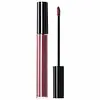KVD Vegan Beauty Everlasting Hyperlight Transfer-Proof Liquid Lipstick Versus Huda Beauty Original Liquid Matte Lipstick
What's inside
What's inside
 Key Ingredients
Key Ingredients

 Benefits
Benefits

 Concerns
Concerns

 Ingredients Side-by-side
Ingredients Side-by-side

Dimethicone
EmollientTrimethylsiloxysilicate
EmollientTrisiloxane
Skin ConditioningIsododecane
EmollientMica
Cosmetic ColorantCera Microcristallina
Emulsion StabilisingIsononyl Isononanoate
EmollientCetyl Dimethicone
EmollientDimethicone/Vinyl Dimethicone Crosspolymer
Skin ConditioningDisteardimonium Hectorite
StabilisingIllite
AbrasiveAlcohol Denat.
AntimicrobialC30-45 Alkyl Dimethicone
Skin ConditioningCaprylic/Capric Triglyceride
MaskingEthyl Vanillin
MaskingLaureth-4
EmulsifyingWater
Skin ConditioningRubus Idaeus Leaf Extract
Skin ConditioningBHT
AntioxidantCI 77891
Cosmetic ColorantIron Oxides
CI 45410
Cosmetic ColorantCI 42090
Cosmetic ColorantDimethicone, Trimethylsiloxysilicate, Trisiloxane, Isododecane, Mica, Cera Microcristallina, Isononyl Isononanoate, Cetyl Dimethicone, Dimethicone/Vinyl Dimethicone Crosspolymer, Disteardimonium Hectorite, Illite, Alcohol Denat., C30-45 Alkyl Dimethicone, Caprylic/Capric Triglyceride, Ethyl Vanillin, Laureth-4, Water, Rubus Idaeus Leaf Extract, BHT, CI 77891, Iron Oxides, CI 45410, CI 42090
Isododecane
EmollientCyclopentasiloxane
EmollientBeeswax
Emulsion StabilisingTrimethylsiloxysilicate
EmollientPolypropylsilsesquioxane
Octyldodecanol
EmollientDisteardimonium Hectorite
StabilisingAlcohol
AntimicrobialEthyl Vanillin
MaskingPhenoxyethanol
PreservativeParfum
MaskingPropylene Carbonate
SolventWater
Skin ConditioningPhospholipids
Skin ConditioningCoffea Arabica Seed Extract
MaskingOlea Europaea Fruit Oil
MaskingAscorbyl Palmitate
AntioxidantLinoleic Acid
CleansingRetinyl Palmitate
Skin ConditioningTocopheryl Acetate
AntioxidantLycopene
AntioxidantMica
Cosmetic ColorantCI 77891
Cosmetic ColorantCI 77491
Cosmetic ColorantCI 16035
Cosmetic ColorantCI 19140
Cosmetic ColorantCI 77499
Cosmetic ColorantCI 77492
Cosmetic ColorantCI 15850
Cosmetic ColorantCI 75470
Cosmetic ColorantCI 45410
Cosmetic ColorantCI 42090
Cosmetic ColorantIsododecane, Cyclopentasiloxane, Beeswax, Trimethylsiloxysilicate, Polypropylsilsesquioxane, Octyldodecanol, Disteardimonium Hectorite, Alcohol, Ethyl Vanillin, Phenoxyethanol, Parfum, Propylene Carbonate, Water, Phospholipids, Coffea Arabica Seed Extract, Olea Europaea Fruit Oil, Ascorbyl Palmitate, Linoleic Acid, Retinyl Palmitate, Tocopheryl Acetate, Lycopene, Mica, CI 77891, CI 77491, CI 16035, CI 19140, CI 77499, CI 77492, CI 15850, CI 75470, CI 45410, CI 42090
Ingredients Explained
These ingredients are found in both products.
Ingredients higher up in an ingredient list are typically present in a larger amount.
Ci 42090 is a synthetic dye created from petroleum. It is used to give a bright blue color to cosmetics, medicine, and food.
CI 45410 is a synthetic red-pigment and dye.
It often goes by both Red 28 or Red 27; manufacturers label both ingredients as CI 45410.
This dye is commonly found in makeup because it imparts a vivid color. Some types of this dye change color based on pH level and interaction with moisture:
Your skin has a natural pH of around 4.5 - 5.5.
According to the FDA, CI 45410 is not permitted for use in eye products.
Red 27 is a flourescein dye and commonly used as a fluorescent tracer in medicine.
Learn more about CI 45410Ci 77891 is a white pigment from Titanium dioxide. It is naturally found in minerals such as rutile and ilmenite.
It's main function is to add a white color to cosmetics. It can also be mixed with other colors to create different shades.
Ci 77891 is commonly found in sunscreens due to its ability to block UV rays.
Learn more about CI 77891Disteardimonium Hectorite comes from the clay mineral named hectorite. It is used to add thickness to a product.
It can also help stabilize a product by helping to disperse other ingredients.
Hectorite is a rare, white clay mineral.
Learn more about Disteardimonium HectoriteWe don't have a description for Ethyl Vanillin yet.
Isododecane is a fragrance, emollient, and solvent.
As an emollient, it helps your skin stay soft and hydrated. Emollients help trap moisture into your skin.
Isododecane's role as a solvent makes it a great texture enhancer. It spreads smoothly on skin and does not leave a sticky feeling behind. Isododecane also helps prevent color transfer in makeup products.
Isododecane is not absorbed into skin.
Learn more about IsododecaneMica is a naturally occurring mineral used to add shimmer and color in cosmetics. It can also help improve the texture of a product or give it an opaque, white/silver color.
Serecite is the name for very fine but ragged grains of mica.
This ingredient is often coated with metal oxides like titanium dioxide. Trace amounts of heavy metals may be found in mica, but these metals are not harmful in our personal products.
Mica has been used since prehistoric times throughout the world. Ancient Egyptian, Indian, Greek, Roman, Aztec, and Chinese civilizations have used mica.
Learn more about MicaThis silicone is an emollient. Emollients create a thin film on the skin to prevent moisture from escaping.
It is not soluble in water and helps increase water-resistance in products.
According to a manufacturer, it can blend seamlessly with silicone oils, such as Cyclopentasiloxane.
Learn more about TrimethylsiloxysilicateWater. It's the most common cosmetic ingredient of all. You'll usually see it at the top of ingredient lists, meaning that it makes up the largest part of the product.
So why is it so popular? Water most often acts as a solvent - this means that it helps dissolve other ingredients into the formulation.
You'll also recognize water as that liquid we all need to stay alive. If you see this, drink a glass of water. Stay hydrated!
Learn more about Water